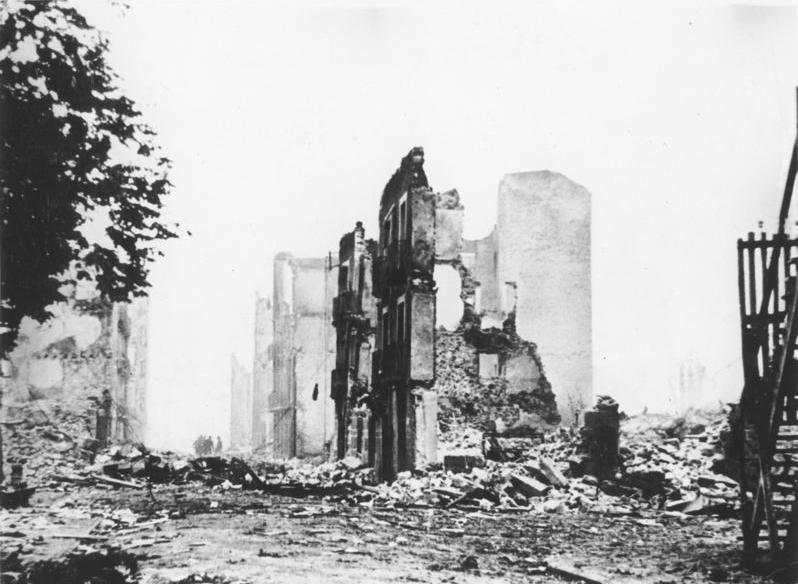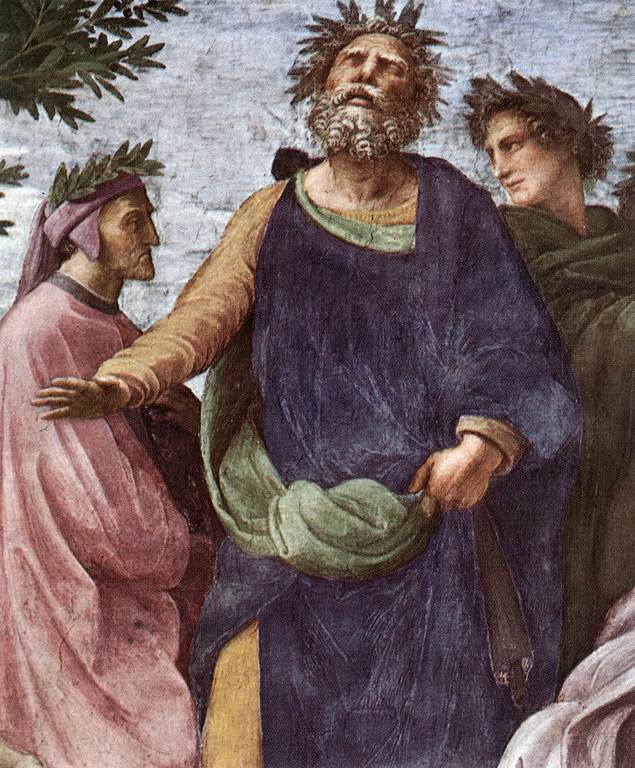|
Wojciech Fangor
Wojciech (pronounced: ) Bonawentura Fangor (15 November 1922 – 25 October 2015), also known as Voy Fangor, was a Polish Painting, painter, graphic artist, Sculpture, sculptor. Described as "one of the most distinctive painters to emerge from postwar Poland," Fangor has been associated with Op art and Color field movements and recognized as a key figure in the history of Polish abstract art. As a graphic artist, Fangor is known as a co-creator of the influential Polish School of Posters. Between 1953 and 1961, he designed over one hundred posters working alongside Henryk Tomaszewski (poster artist), Henryk Tomaszewski, Jan Lenica and others. After briefly conforming to the style of Socialist realism, Socialist Realism during the Stalinist regime in Poland, Fangor had moved toward non-objective painting by the late 1950s. Fangor's 1958 exhibition titled ''Studium Przestrzeni'' at Salon Nowej Kultury in Warsaw, organized together with Stanisław Zamecznik, had sought to create ... [...More Info...] [...Related Items...] OR: [Wikipedia] [Google] [Baidu] |
Warsaw
Warsaw ( pl, Warszawa, ), officially the Capital City of Warsaw,, abbreviation: ''m.st. Warszawa'' is the capital and largest city of Poland. The metropolis stands on the River Vistula in east-central Poland, and its population is officially estimated at 1.86 million residents within a greater metropolitan area of 3.1 million residents, which makes Warsaw the 7th most-populous city in the European Union. The city area measures and comprises 18 districts, while the metropolitan area covers . Warsaw is an Alpha global city, a major cultural, political and economic hub, and the country's seat of government. Warsaw traces its origins to a small fishing town in Masovia. The city rose to prominence in the late 16th century, when Sigismund III decided to move the Polish capital and his royal court from Kraków. Warsaw served as the de facto capital of the Polish–Lithuanian Commonwealth until 1795, and subsequently as the seat of Napoleon's Duchy of Warsaw. Th ... [...More Info...] [...Related Items...] OR: [Wikipedia] [Google] [Baidu] |
Jan Lenica
Jan Lenica (4 January 1928, Poznań, Poland – 5 October 2001, Berlin) was a Polish graphic designer and cartoonist. A graduate of the Architecture Department of Warsaw Polytechnic, Lenica became a poster illustrator and a collaborator on the early animation films of Walerian Borowczyk. From 1963 – 1986 he lived and worked in France, while from 1987 he lived and worked in Berlin. He was a professor of graphic, poster, animated cartoon for many years at German high schools and the first professor of the animation class at the University of Kassel, Germany, in 1979. He used cut-out stop motion animation in his numerous films, which included two features: '' Adam 2'' (1968) and ''Ubu et la grande gidouille'' (1976, but released in France only in 1979). Major awards *1960 - Nominated for a BAFTA Film Award for ''Dom''. Shared with Polish Walerian Borowczyk *1961 - Toulouse-Lautrec Grand Prix, Versailles (France) *1961 - Golden Dragon for ''Nowy Janko Muzykant'' tied with ''M ... [...More Info...] [...Related Items...] OR: [Wikipedia] [Google] [Baidu] |
Tadeusz Pruszkowski
Tadeusz Pruszkowski (15 April 1888 – 30 June 1942) was a Polish painter and art teacher, known primarily for his portraits. Biography He began his artistic studies in 1904 at the , under Konrad Krzyżanowski.Brief biography @ Culture.pl In 1908, he continued his studies in Paris, where he associated with Polish writers and artists belonging to the Royalist Club, a organization. He also met his future wife there. After graduating, he travelled to Switzerland and Algeria; returning to Poland in 1911 and helping to create an artists' society known as "Young Art" (Młoda Sztuka). In 1914, he held his first solo exhibition at the "". [...More Info...] [...Related Items...] OR: [Wikipedia] [Google] [Baidu] |
Nazi Occupation Of Poland
Nazism ( ; german: Nazismus), the common name in English for National Socialism (german: Nationalsozialismus, ), is the far-right totalitarian political ideology and practices associated with Adolf Hitler and the Nazi Party (NSDAP) in Nazi Germany. During Hitler's rise to power in 1930s Europe, it was frequently referred to as Hitlerism (german: Hitlerfaschismus). The later related term " neo-Nazism" is applied to other far-right groups with similar ideas which formed after the Second World War. Nazism is a form of fascism, with disdain for liberal democracy and the parliamentary system. It incorporates a dictatorship, fervent antisemitism, anti-communism, scientific racism, and the use of eugenics into its creed. Its extreme nationalism originated in pan-Germanism and the ethno-nationalist '' Völkisch'' movement which had been a prominent aspect of German nationalism since the late 19th century, and it was strongly influenced by the paramilitary groups that emerged aft ... [...More Info...] [...Related Items...] OR: [Wikipedia] [Google] [Baidu] |
Felicjan Kowarski
Felicjan Szczesny Kowarski (8 November 1890 – 22 September 1948) was a Polish painter and sculptor, known mostly from his monumental wall paintings and plafonds (e.g. plafond in the ''Hall under the Birds'' at castle of Wawel). His work was part of the painting event in the art competition at the 1936 Summer Olympics The 1936 Summer Olympics ( German: ''Olympische Sommerspiele 1936''), officially known as the Games of the XI Olympiad ( German: ''Spiele der XI. Olympiade'') and commonly known as Berlin 1936 or the Nazi Olympics, were an international multi- .... See also * Jan Betley References External linksFelicjan Kowarski's gallery at malarze.com 1890 births 1948 deaths 20th-century Polish painters 20th-century Polish male artists Polish sculptors Polish male sculptors 20th-century sculptors Olympic competitors in art competitions Polish male painters {{Poland-sculptor-stub ... [...More Info...] [...Related Items...] OR: [Wikipedia] [Google] [Baidu] |
Exposition Internationale Des Arts Et Techniques Dans La Vie Moderne
The ''Exposition Internationale des Arts et Techniques dans la Vie Moderne'' (International Exposition of Art and Technology in Modern Life) was held from 25 May to 25 November 1937 in Paris, France. Both the Palais de Chaillot, housing the Musée de l'Homme, and the Palais de Tokyo, which houses the Musée d'Art Moderne de la Ville de Paris, were created for this exhibition that was officially sanctioned by the Bureau International des Expositions. A third building, , housing the permanent Museum of Public Works, which was originally to be among the new museums created on the hill of Chaillot on the occasion of the Exhibition, was not built until January 1937 and inaugurated in March 1939. Exhibitions At first the centerpiece of the exposition was to be a tower ("Phare du Monde") which was to have a spiraling road to a parking garage located at the top and a hotel and restaurant located above that. The idea was abandoned as it was far too expensive. Pavilions Finnish ... [...More Info...] [...Related Items...] OR: [Wikipedia] [Google] [Baidu] |
Guernica (Picasso)
''Guernica'' (; ) is a large 1937 oil painting by Spanish artist Pablo Picasso.Richardson (2016)Picasso, Pablo. Guernica.' Museo Reina Sofía. ''(Retrieved 2017-09-07.)'' It is one of his best-known works, regarded by many art critics as the most moving and powerful anti-war painting in history. It is exhibited in the Museo Reina Sofía in Madrid. The grey, black, and white painting, on a canvas tall and across, portrays the suffering wrought by violence and chaos. Prominent in the composition are a gored horse, a bull, screaming women, a dead baby, a dismembered soldier, and flames. Picasso painted ''Guernica'' at his home in Paris in response to the 26 April 1937 bombing of Guernica, a Basque Country town in northern Spain that was bombed by Nazi Germany and Fascist Italy at the request of the Spanish Nationalists. Upon completion, ''Guernica'' was exhibited at the Spanish display at the 1937 Paris International Exposition, and then at other venues around the world ... [...More Info...] [...Related Items...] OR: [Wikipedia] [Google] [Baidu] |
Western Canon
The Western canon is the body of high culture literature, music, philosophy, and works of art that are highly valued in the West; works that have achieved the status of classics. However, not all these works originate in the Western world, and such works are also valued throughout the globe. It is "a certain Western intellectual tradition that goes from, say, Socrates to Wittgenstein in philosophy, and from Homer to James Joyce in literature". Literary canon Classic book A classic is a book, or any other work of art, accepted as being exemplary or noteworthy. In the second century Roman miscellany '' Attic Nights'', Aulus Gellius refers to a writer as "classicus... scriptor, non proletarius" ("A distinguished, not a commonplace writer"). Such classification began with the Greeks' ''ranking'' their cultural works, with the word '' canon'' (ancient Greek κανών, kanṓn: "measuring rod, standard"). Moreover, early Christian Church Fathers used ''canon'' to rank th ... [...More Info...] [...Related Items...] OR: [Wikipedia] [Google] [Baidu] |
Affluent
Wealth is the abundance of valuable financial assets or physical possessions which can be converted into a form that can be used for transactions. This includes the core meaning as held in the originating Old English word , which is from an Indo-European word stem. The modern concept of wealth is of significance in all areas of economics, and clearly so for growth economics and development economics, yet the meaning of wealth is context-dependent. An individual possessing a substantial net worth is known as ''wealthy''. Net worth is defined as the current value of one's assets less liabilities (excluding the principal in trust accounts). At the most general level, economists may define wealth as "the total of anything of value" that captures both the subjective nature of the idea and the idea that it is not a fixed or static concept. Various definitions and concepts of wealth have been asserted by various individuals and in different contexts.Denis "Authentic Development: I ... [...More Info...] [...Related Items...] OR: [Wikipedia] [Google] [Baidu] |
Medal For Merit To Culture – Gloria Artis
A medal or medallion is a small portable artistic object, a thin disc, normally of metal, carrying a design, usually on both sides. They typically have a commemorative purpose of some kind, and many are presented as awards. They may be intended to be worn, suspended from clothing or jewellery in some way, although this has not always been the case. They may be struck like a coin by dies or die-cast in a mould. A medal may be awarded to a person or organisation as a form of recognition for sporting, military, scientific, cultural, academic, or various other achievements. Military awards and decorations are more precise terms for certain types of state decoration. Medals may also be created for sale to commemorate particular individuals or events, or as works of artistic expression in their own right. In the past, medals commissioned for an individual, typically with their portrait, were often used as a form of diplomatic or personal gift, with no sense of being an award for ... [...More Info...] [...Related Items...] OR: [Wikipedia] [Google] [Baidu] |
Solomon R
Solomon (; , ),, ; ar, سُلَيْمَان, ', , ; el, Σολομών, ; la, Salomon also called Jedidiah ( Hebrew: , Modern: , Tiberian: ''Yăḏīḏăyāh'', "beloved of Yah"), was a monarch of ancient Israel and the son and successor of David, according to the Hebrew Bible and the Old Testament. He is described as having been the penultimate ruler of an amalgamated Israel and Judah. The hypothesized dates of Solomon's reign are 970–931 BCE. After his death, his son and successor Rehoboam would adopt harsh policy towards the northern tribes, eventually leading to the splitting of the Israelites between the Kingdom of Israel in the north and the Kingdom of Judah in the south. Following the split, his patrilineal descendants ruled over Judah alone. The Bible says Solomon built the First Temple in Jerusalem, dedicating the temple to Yahweh, or God in Judaism. Solomon is portrayed as wealthy, wise and powerful, and as one of the 48 Jewish prophets. He is also the s ... [...More Info...] [...Related Items...] OR: [Wikipedia] [Google] [Baidu] |






